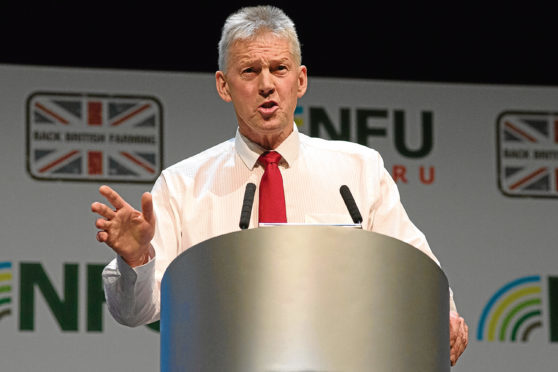It seems hardly a week goes by without agriculture, and especially modern livestock farming, being attacked in the media for causing climate change, biodiversity loss and destroying the environment.
The Extinction Rebellion demonstrations raised the environment to the top of the political agenda.
Jeremy Corbyn declared a national climate change emergency, claiming that “intensive farming is pumping the earth full of fertilisers and taking its toll on our soils”. Not to be outdone, First Minister Nicola Sturgeon also declared a national emergency, telling her party conference that if the UK expert climate committee recommended more urgent action to cut emissions she would act.
Last week the climate committee set up by the UK, Welsh and Scottish Governments published its report, Net Zero The UK’s Contribution To Stopping Global Warming”. Its recommendations will have a huge impact on the farming sector as it claims the voluntary approach to reducing agriculture emissions has failed.
To meet the UK’s obligations under the Paris Climate Agreement the committee recommends the UK sets an ambitious new emissions target of net-zero by 2050.
For Scotland they went further and set a net-zero target by 2045. That is a 100% reduction in greenhouse gas emissions in the next 25 years. To deliver these targets agriculture will have to play its full part.
The committee’s recommendations include: using new agricultural policies and the £3 billion of Common Agricultural Policy (Cap) monies to drive the change to low-emission farming in the UK; healthier diets by reducing the consumption of carbon-intensive animal products; and improved breeding and feeding of livestock, increasing arable yields and a reduction in food waste.
They believe big reductions can be achieved by the land sector with a massive increase in tree planting to 30,000 hectares per year, restoring peatlands and a huge increase in energy crops to 700,000 hectares by 2050. They claim Scotland is best placed to deliver these land-based reductions by increasing from 20% to 30% of land under trees, doubling the area of restored peatland to over 1.4 million hectares and producing 33% of the UK’s solid biomass.
Within hours Nicola Sturgeon committed the Scottish Government to adopting net zero by 2045.
This raises some pretty fundamental questions about the future of livestock farming in Scotland. This hugely challenging Scottish target can only be delivered by a massive clearance of cattle and sheep from our hill and uplands and planting them with trees.
Indeed, former Quality Meat Scotland chairman Jim McLaren claimed last year that according to the Scottish Government’s own advice, if Scotland adopted a net zero target by 2050 it could spell the end of livestock farming in Scotland.
By legislating for the 2045 target the Scottish Government appear to be passing a death sentence on the future of our livestock industry.
Where is our Farm Minister, whose job it is to fight the industry’s corner in cabinet? Silent and apparently side-lined, by the looks of it.
* George Lyon is a former Liberal Democrat MEP. He is a senior consultant for Hume Brophy and sits on the board of levy body organisation AHDB.










